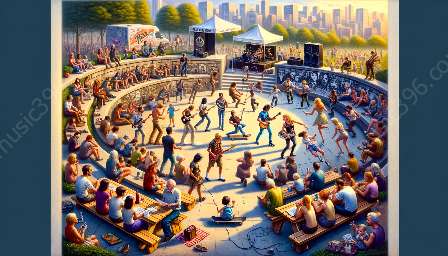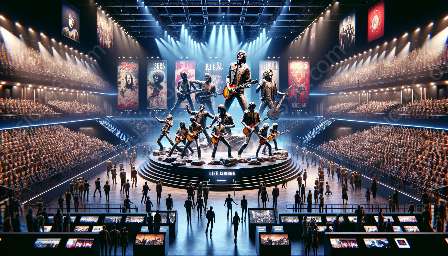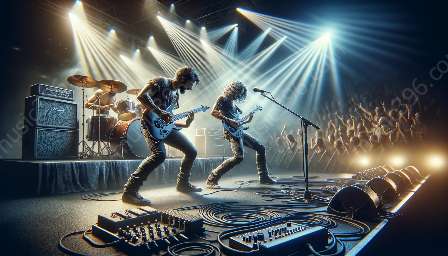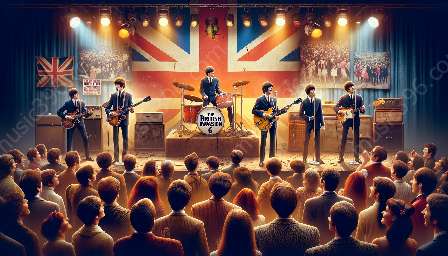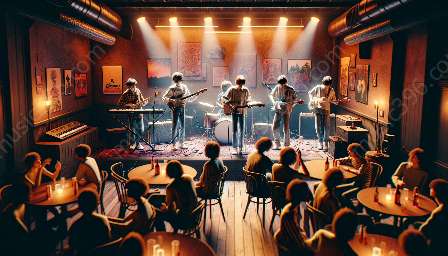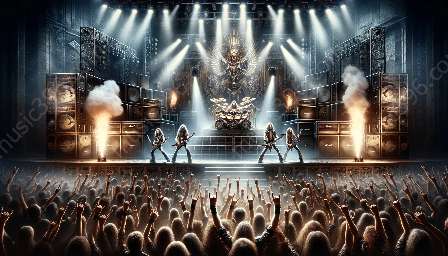Rock music has long been associated with electrifying performances that captivate audiences. To understand the key elements of successful rock music performances, it is essential to delve into the history of rock music and explore the intrinsic qualities that define this genre. From musicianship and stage presence to audience engagement and showmanship, successful rock music performances encompass a wide range of factors that contribute to their impact and resonance.
History of Rock Music
The history of rock music is a tapestry woven with diverse influences, revolutionary movements, and iconic figures. It emerged in the 1950s, drawing from rhythm and blues, country, and gospel music. Pioneers such as Chuck Berry, Little Richard, and Elvis Presley played pivotal roles in shaping the foundational elements of rock music, blending electrifying rhythms with raw, emotive vocals. The 1960s witnessed a seismic shift in rock music with the British Invasion, as bands like The Beatles and The Rolling Stones redefined the genre and ushered in a new era of artistic experimentation and cultural impact.
Throughout the 1970s and 1980s, rock music continued to evolve, embracing subgenres such as psychedelic rock, progressive rock, and punk rock. Icons like Led Zeppelin, Pink Floyd, and The Ramones left an indelible mark on the music landscape, pushing boundaries and expanding the sonic possibilities of rock music. The 1990s and 2000s saw the rise of alternative rock, grunge, and nu-metal, showcasing the genre's adaptability and enduring relevance in the contemporary music scene.
Understanding the history of rock music is essential in recognizing and appreciating the key elements that contribute to successful rock music performances, as it provides valuable insights into the evolution and nuances of the genre.
Essential Components of Rock Music
Rock music is characterized by its dynamic and visceral nature, incorporating several essential components that define its distinct sound and aesthetic. These components play a crucial role in shaping impactful and successful rock music performances:
Musicianship
At the heart of successful rock music performances lies exceptional musicianship. From intricate guitar riffs and thunderous drumming to pulsating bass lines and powerful vocals, the technical proficiency and artistry of the musicians are fundamental to delivering an unforgettable performance. The ability to seamlessly blend individual virtuosity with cohesive group dynamics creates an electrifying sonic tapestry that resonates with audiences.
Stage Presence
A commanding stage presence is a defining trait of successful rock music performances. The charisma, energy, and confidence exuded by the performers captivate and mesmerize audiences, creating an immersive and compelling experience. Whether it's a high-octane frontman, a captivating guitarist, or a dynamic rhythm section, the collective stage presence of the band elevates the performance to new heights.
Songwriting and Lyrics
The art of songwriting and lyricism is a cornerstone of rock music, influencing the emotional depth and narrative resonance of performances. Whether conveying messages of rebellion, love, introspection, or social commentary, powerful lyrics coupled with infectious melodies have the ability to connect with audiences on a profound level, making them an integral element of successful rock music performances.
Instrumentation and Sound
The sonic palette of rock music is characterized by its diverse instrumentation and powerful sound. Whether it's the distortion-laden crunch of electric guitars, the thunderous pulse of bass and drums, or the melodic interplay of keyboards and synths, the sonic landscape of rock music creates an immersive and impactful sonic experience that defines successful performances.
Visual Aesthetics
Visual aesthetics, including stage design, lighting, and overall presentation, contribute to the overall impact of rock music performances. From elaborate stage setups and dramatic lighting effects to artistic visual projections and captivating costumes, the visual elements complement the auditory experience, creating a multi-dimensional spectacle that leaves a lasting impression.
Performance Dynamics
Beyond the intrinsic elements of rock music, successful performances are imbued with dynamic qualities that engage and enthrall audiences:
Emotional Connectivity
The ability to forge an emotional connection with the audience is paramount in successful rock music performances. Whether through raw, unbridled passion or poignant introspection, the emotional resonance of the performance has the power to move and inspire, fostering a profound bond between the performers and their audience.
Energy and Intensity
Energy and intensity are hallmark traits of impactful rock music performances. The electrifying fervor and relentless drive exhibited by the performers infuse the atmosphere with an undeniable vitality, sustaining the momentum and fervor of the performance from start to finish.
Spontaneity and Authenticity
Embracing spontaneity and authenticity adds an element of unpredictability and genuine connection to rock music performances. Whether through improvisational solos, unscripted interactions, or unrestrained emotion, the organic nature of the performance imparts a sense of immediacy and sincerity that resonates with audiences.
Engagement and Interaction
Establishing a rapport with the audience through engaging banter, interactive moments, and a genuine connection fosters a communal experience that transcends the stage. From crowd sing-alongs and call-and-response dynamics to crowd surfing and interactive performances, audience engagement enhances the sense of inclusivity and camaraderie within the live setting.
Legacy and Influence
Successful rock music performances not only captivate audiences in the moment, but also leave a lasting legacy and exert a profound influence on the music landscape:
Cultural Impact
Rock music performances often serve as cultural touchstones, embodying and reflecting the zeitgeist of their era. From iconic Woodstock performances and political protest anthems to genre-defining concerts and boundary-pushing showcases, rock music performances have the power to shape and define cultural movements, leaving an indelible mark on society.
Influence and Inspiration
Successful rock music performances inspire and influence future generations of musicians, serving as benchmarks of artistic excellence and innovation. The impact of legendary performances reverberates through time, shaping the creative aspirations and musical endeavors of aspiring artists and contributing to the ongoing evolution of rock music.
Enduring Relevance
The enduring relevance of successful rock music performances lies in their ability to transcend temporal and generational boundaries, resonating with audiences across decades and cultures. Whether through classic performances that stand the test of time or contemporary showcases that push the boundaries of the genre, impactful rock music performances maintain their relevance and significance in the pantheon of musical expression.
Understanding the key elements of successful rock music performances entails an exploration of the genre's historical context, essential components, performance dynamics, and enduring influence. By delving into these elements, one gains a comprehensive understanding of the multifaceted nature of rock music performances and their profound impact on audiences and the broader cultural landscape.









